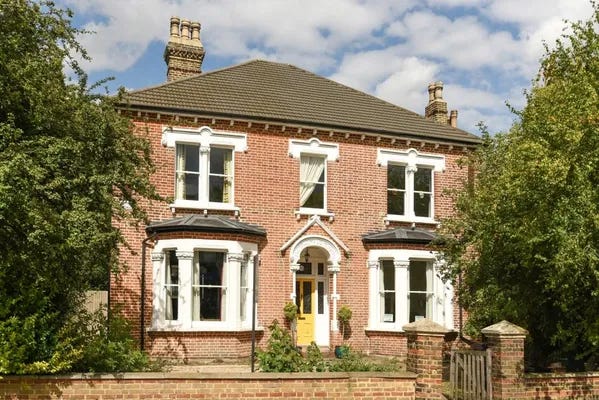John Barwell Cator and London's finest suburb
The story of how Beckenham was built...
The story of John Barwell Cator. The sort of man that made a huge difference but nobody has heard of. This is his story but it starts with his great-uncle, also confusingly called John Cator.
The earlier John Cator started out as a timber merchant in Southwark but, via various shenanigans and deals, became a significant landowner in what is now south-east London. This earlier John Cator was a pal of Samuel Johnson (he arranged the funeral for Johnson's wife because the great man was too distraught to do it himself). Among the properties he bought was a Manor house on the road from Beckenham to Southend called Stumps Hill - Cator renamed in Beckenham Place. For clarity the Southend referred to here isn’t the new city in Essex but what most people these days call Catford. Just along from the Green Man pub are Southend Ponds, one of Catford’s more pleasant features.
John Cator also bought farms with names now familiar to those of us brought up in Beckenham and Lewisham: Foxgrove, Langley Park, Copers Cope, Lawrie Park, Lee Green. On his death (he had no children) the lands passed to a nephew, George Sparkes. Unfortunately, Sparkes died young and intestate leaving three children. And this is where John Barwell Cator comes into the story. The earlier John Cator had been a member of parliament (for Ipswich) but was kicked out for taking bribes and, despite the scandal, the family were well connected. John Barwell Cator sponsored a private act of parliament that, when passed, gave him control of the extensive landholdings rather than have them sit in trust for George Sparkes’ children.
John Barwell Cator knew what he was about since a year before the act was passed, the Crystal Palace was moved from Hyde Park to Sydenham Hill and this relocation was accompanied by the railways. Cator controlled land from Sydenham High Road to Shortlands. With the relocation of Crystal Palace and the rail connections that went with this, Cator controlled the country's most prime development land (plus a nice spot at Blackheath as well).
Despite the questionable manner in which Cator secured control of the land, he set about creating one of Victorian England’s finest suburbs (as a Beckenham native I am not remotely biased here):
“Built in the style of an Indian colonial town, with wide tree lined avenues and large detached houses in generous gardens, they were designed to appeal to the wealthy, looking for a home out of London but convenient for the city. As this market became saturated, the financially astute Cators turned to building smaller properties.”
The development of the land took over 30 years (the earliest villas at Sydenham are from the 1850s while the semi-detached house my Dad bought on Beckenham Road was built in 1896. John Barwell Cator didn’t invent the suburb - Cicero talked about suburbs - but he did create perhaps the first railway age suburb.
I'm not sure who was the bigger rogue, the old John Cator of Beckenham Place or the ruthless developer John Barwell Cator. But we can thank them for creating South London's finest suburb.


